#coco coir pot
Explore tagged Tumblr posts
Text
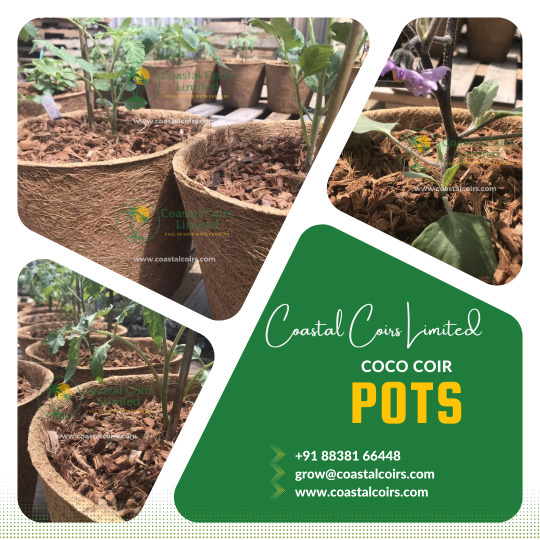
"Elevate your gardening experience with Coastal Coirs Limited and our Coco Coir Pots!
~
Discover the perfect blend of sustainability and style with our Coco Coir Pots. Crafted by Coastal Coirs Limited, these eco-friendly alternatives to traditional plastic pots are made from renewable coco coir fibers, ensuring a greener future for our planet.
~
Coastal Coirs Limited Coco Coir Pots offer excellent water retention and breathability, providing the ideal environment for your plants' root development. Watch your plants flourish as they receive optimal moisture and oxygen, leading to healthier growth and vibrant blooms.
~
Choose Coastal Coirs Limited as your trusted companion in sustainable gardening. Our Coco Coir Pots are not only biodegradable but also durable, allowing for multiple planting seasons. Join the movement towards a more conscious and beautiful garden today!
~
Experience the difference that Coastal Coirs Limited brings to your gardening journey. Embrace the versatility and eco-friendliness of Coco Coir Pots and witness the transformation of your plants into stunning natural wonders.
~
Contact us for more details, WhatsApp : +91 8838166448 (or) https://wa.me/918838166448 Website : www.coastalcoirs.com Mail : [email protected] . . . . . . . . . . . . . . . . . . . . . . . . . . . . . . . . . . . . . . . . . . . . . . . . . . . . . . . . . . . . . . . . . . . . . . . . . . . . . . . . . . . . . . . . . . . . . . . . . . . . . . . . . . . . . . . . . . . . . . . . #coastalcoirs #coastalcoirslimited #cococoirpith #cococoir #cocopeat #coirpith #cocopeatblock #coirpithblocks #growingmedium #coirpots #coirsubstrate #substrate #substratos #cocopeatblocks #coirpithblocks #peatblocks #hydroponicsubstrate #hydroponicsupplies #hydroponics #gardensoil #peatmoss #growingpots #peatblocks #peatsubstrates #cococoirpots #cocopot #cocopropagation #growfromseed
#coco coir#coco peat#coir pith#hydroponics#horticulture#growing medium#gardening#coastal coirs limited#greenhouse#coco coir pith#coco coir pot#planting#cannablr#420weed#joints#stuart pot
0 notes
Text
Coco Coir Pots
Title: Harnessing the Green Magic of Coco Coir Pots for Sustainable Gardening
Introduction: Coco coir pots, the eco-friendly alternative to traditional plant containers, are taking the gardening world by storm. These biodegradable pots, derived from coconut husk fiber, offer numerous benefits for both garden enthusiasts and the environment. In this blog post, we'll delve into the world of coco coir pots exploring their many advantages and how they contribute to sustainable gardening practices.
Understanding Coco Coir Pots: Coco coir pots, also known as coir pots or coir planters, are made from coconut coir, a natural fiber extracted from coconut husks. Unlike plastic or clay pots, coco coir pots are biodegradable and have a unique ability to enhance plant growth.
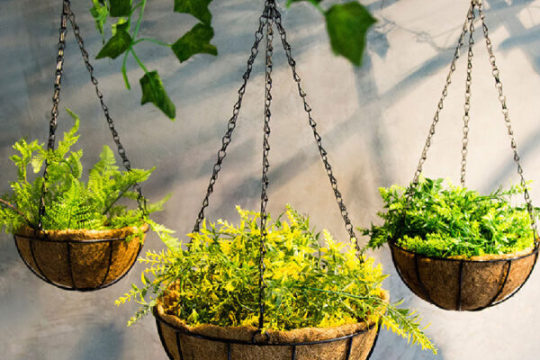
Advantages of Coco Coir Pots: Let's explore some of the key benefits of using coco coir pots in your gardening endeavors:
Biodegradability: One of the most significant advantages of coco coir pots is their biodegradability. These pots break down naturally over time, eliminating the need for disposal and reducing environmental waste.
Reduced Transplant Shock: When it's time to transplant your seedlings or young plants, you can plant the entire coco coir pot directly into the soil. This reduces transplant stress and minimizes root disturbance, ensuring a smoother transition for your plants.
Improved Aeration: The porous nature of coir promotes aeration and air pruning of roots. This leads to healthier root development, as roots are encouraged to grow within the pot and not become root-bound.
Enhanced Moisture Retention: Coco coir is excellent at retaining moisture, which means you won't need to water your plants as frequently. It provides a consistent and steady supply of moisture to the roots.
pH Neutral: Coco coir has a neutral pH level, making it suitable for a wide range of plants. You can easily adjust the pH to match specific plant needs.
Eco-Friendly Alternative: Choosing coco coir pots supports eco-friendly gardening. By opting for biodegradable containers, you reduce plastic waste and minimize the environmental impact of traditional plastic pots.
Versatility: Coco coir pots come in various sizes, making them suitable for different types of plants, from small seedlings to larger ornamental trees. They can be used in both indoor and outdoor gardening.
youtube
Additional Uses of Coco Coir Pots: Coco coir pots aren't limited to just planting. Here are some other applications:
Mulching: Coir pots can be used as mulch. When placed on the soil's surface, they help retain moisture, regulate soil temperature, and reduce weed growth.
Composting: When your coco coir pots are no longer needed, you can add them to your compost pile. They'll break down and enrich the compost with organic matter.
Craft Projects: The natural texture and appearance of coco coir make it a great material for various craft and art projects. Get creative and use coir in your DIY endeavors.
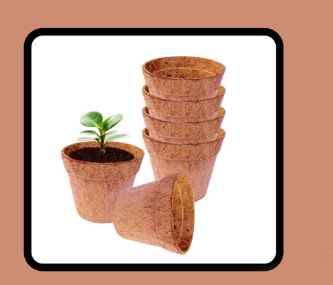
Conclusion: Coco coir pots are a game-changer for sustainable gardening. Their biodegradability, reduced transplant shock, and ability to improve plant growth make them a valuable asset for gardeners. By choosing these eco-friendly alternatives to traditional plant containers, you not only promote healthier plant growth but also contribute to a greener and more sustainable future. Whether you're an avid gardener or just starting out, consider making the switch to coco coir pots and witness the green magic they bring to your garden.
#Coir Dust#Coir Pith#Coco Peat#Long Type Grow Bag#Grow Slab#Coconut Coir Pith#Coir Pith Near Me#Pith Coconut#Coco Pith Near Me#Coir Fibre Pith#Coconut Husk Pith#Coco Coir Pots#Coco Soil#Coconut Fiber For Plants#Coco Pot#Coir Pots For Plants#Peat Grow Bags#Youtube
2 notes
·
View notes
Text
#coco cubes#coir cubes#coco coir grow cubes#cocopeat#growing media#Cocopro#Bio Pot#Coco Peat#Crushed Coco and Coco Perlite.
1 note
·
View note
Text
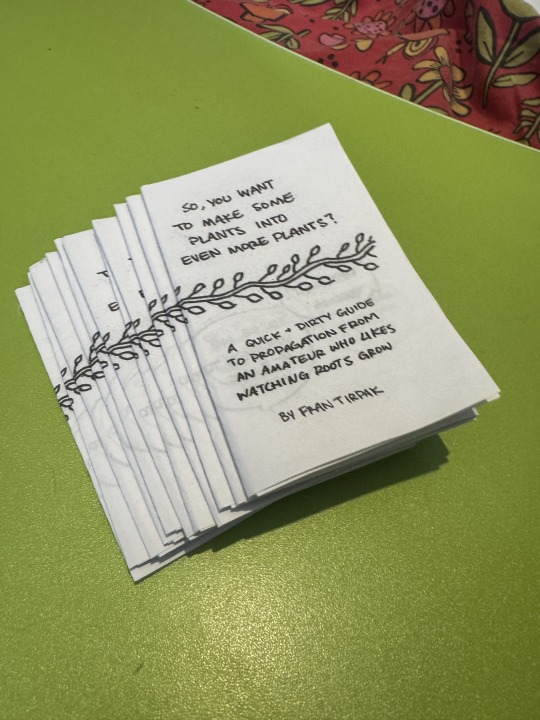
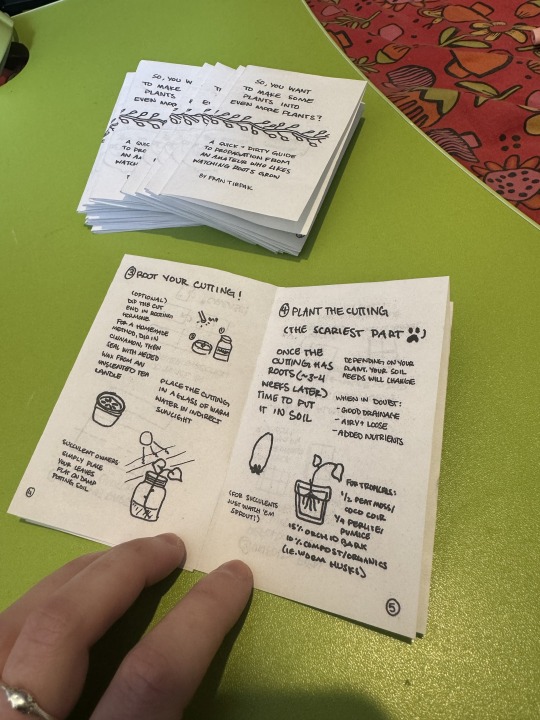
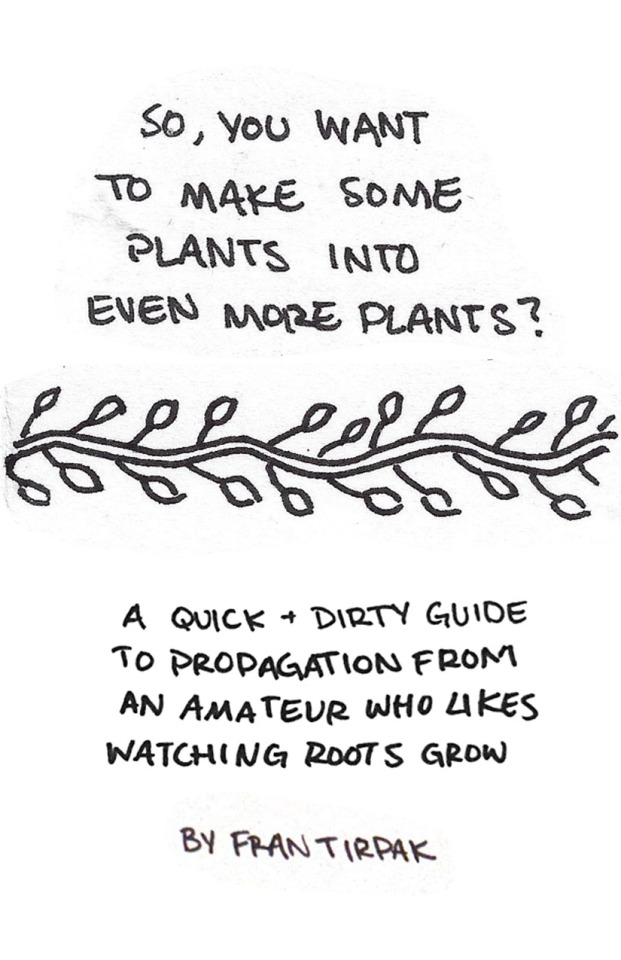
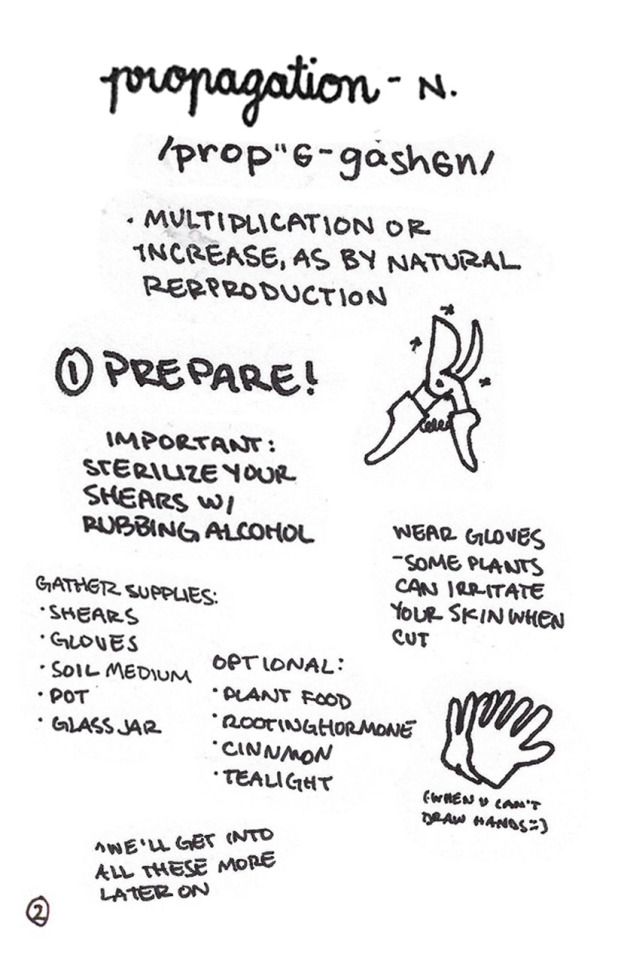
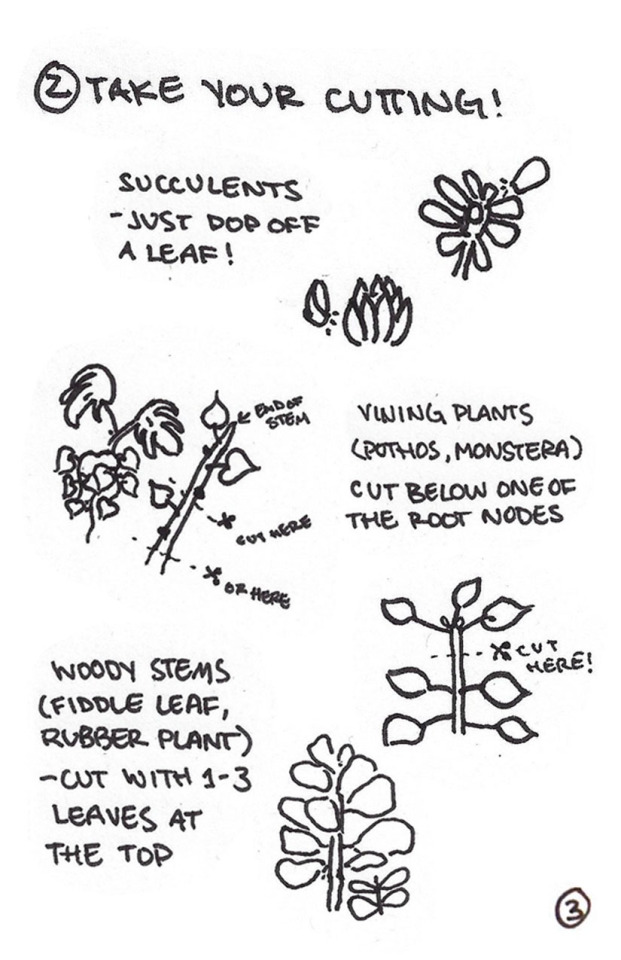

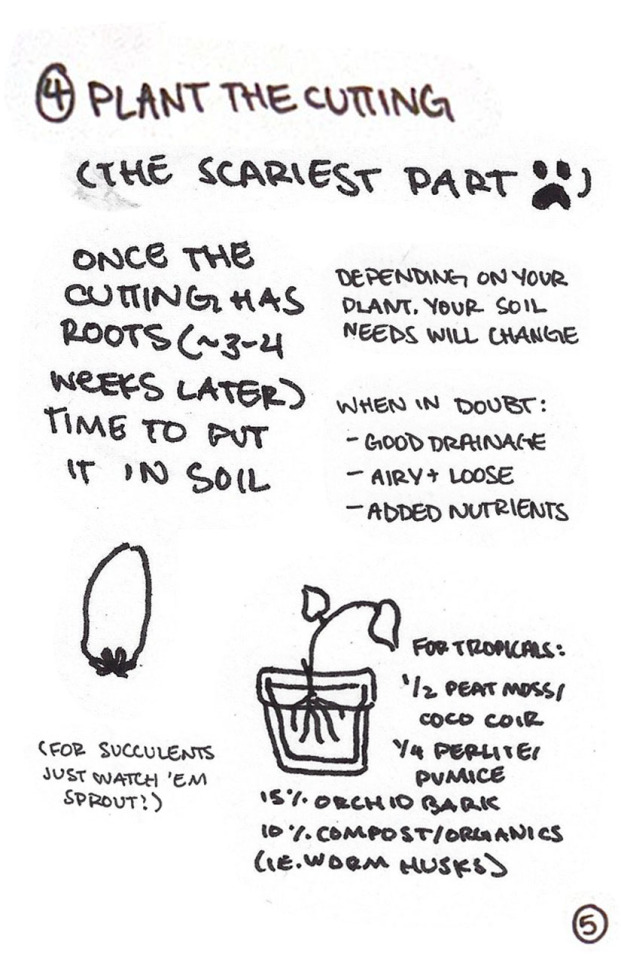
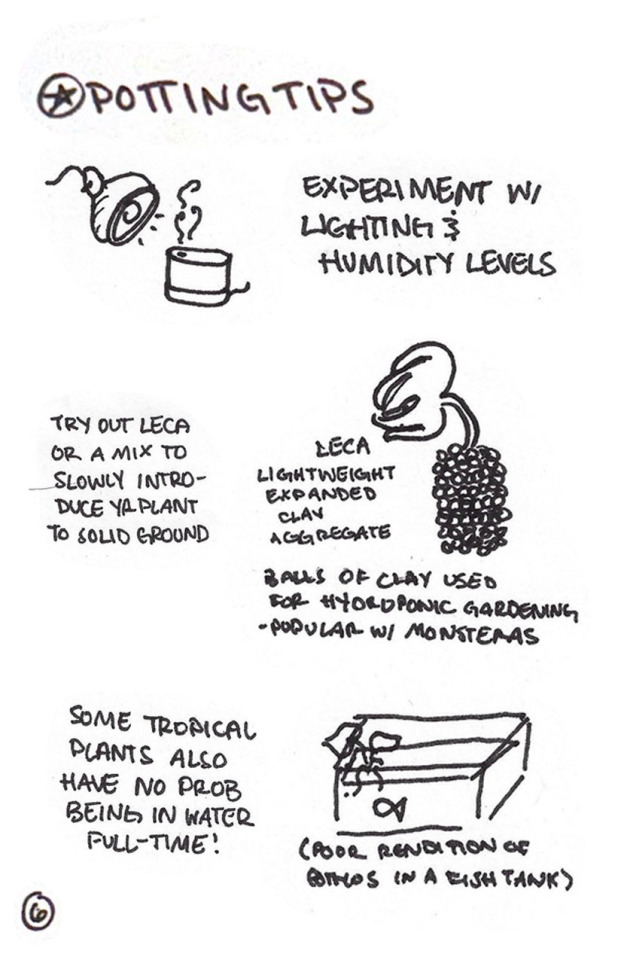
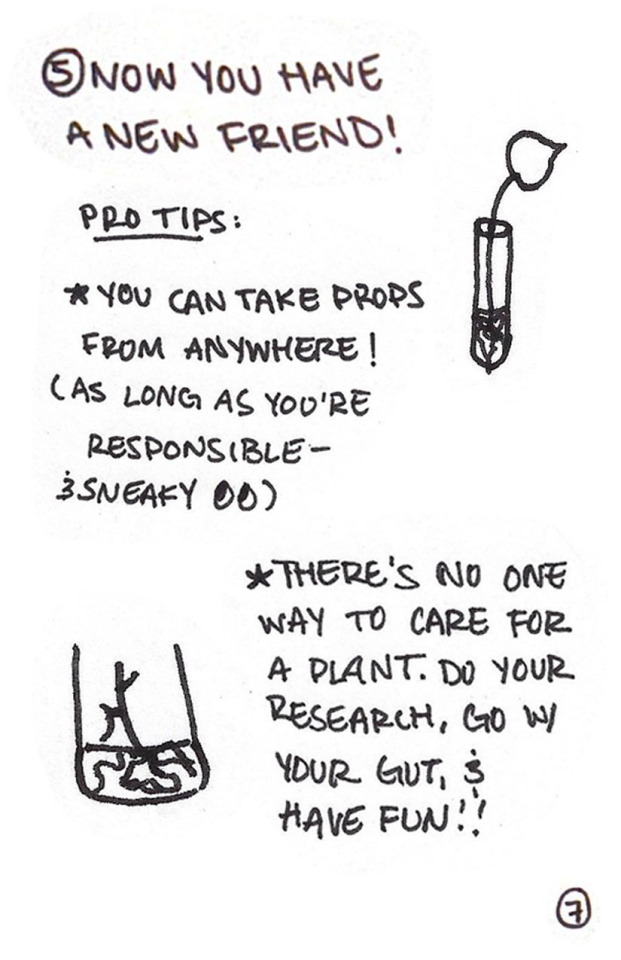
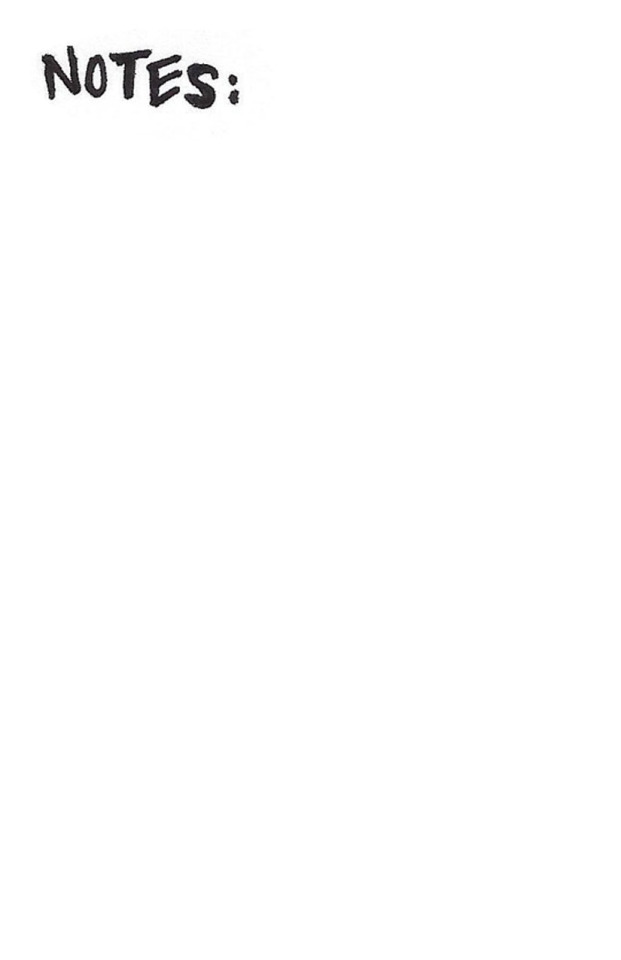
24-hour minizine (8 pages) about DIY propagation from leaf and stem cuttings (free to copy and distribute!! pls just take my name out if you change any content)
EDIT: thank you for all the love! check out @contentsunderpressurezine (instagram) for more of our stuff!
pdf download for print and read friendly versions on this ko-fi I just set up! pay what you wish, free to print and distribute
plaintext under the cut:
So You Want to Make Some Plants Into Even More Plants?
A Quick + Dirty Guide to Propagation from An Amateur Who Likes Watching Roots Grow. (by Fran Tirpak)
propagation - n.
"multiplication or increase, as by natural reproduction."
1. Prepare!
Important: Sterilize your shears w/ rubbing alcohol.
Wear gloves -- some plants can irritate your skin when cut.
Gather supplies: shears, gloves, soil medium, pot, glass jar.
Optional: plant food, rooting hormone, cinnamon, tealight.
^ we'll talk about these all more later on.
2. Take your cutting!
Succulents -- just pop off a leaf!
Vining plants (Pothos, Monstera), cut below one of the root nodes.
Woody stems (fiddle leaf, rubber plant) -- cut with 1-3 leaves at the top
3. Root your cutting!
(Optional) Dip the cut end in rooting hormone. For a homemade method, dip in cinnamon, then seal with melted wax from an unscented tea candle.
Place the cutting in a glass of warm water in indirect sunlight.
Succulent owners: simply place your leaves flat on damp potting soil.
4. Plant the cutting
(the scariest part)
Once the cutting has roots (~3-4 weeks later) time to put it in soil.
Depending on your plant, your soil needs will change.
When in doubt: good drainage, airy & loose, added nutrients.
For tropicals: 1/2 peat moss or coco coir, 1/4 perlite or pumice, 15% orchid bark, 10% compost/organics (i.e. worm husks).
(For succulents, just watch 'em sprout!)
* Potting Tips
Experiment with lighting and humidity levels.
Try out LECA or a mix to slowly introduce your plant to solid ground.
LECA: Lightweight Expanded Clay Aggregate. Balls of clay used in hydroponic gardening - popular with Monsteras
Some tropical plants also have no prob being in water full-time!
5. Now you have a friend!
Pro tips: You can take props from anywhere (as long as you're responsible -- and sneaky).
There's no one way to care for a plant. Do your research, go with your gut, & have fun!
134 notes
·
View notes
Text
Seed planting Winter 2025
I started a number of tomatoes and peppers today for the season to come. Plenty of varieties I'm looking forward to trying this year, especially White current and Sunsugar (hybrid). There are a handful of hybrids in my assortment this year, which is new for me as I usually just grow heirlooms.
Potting mix was 4:1:1 mix of coco coir and perlite and worm castings, with a dusting of azomite and a random amount of mushroom compost thrown on top. Usually I also cover the top in vermiculite too but it's too dark outside to find my bag, I can't remember where I left it.


I'm also trying more superhot peppers this year, my 500k 7 pot golden Bubblegum from last year, plus the 1,500,000 scoville chocolate Trinidad scorpion and carolina reapers. Now that I've realized how much the spiciness gets cut down and how flavorful they become when fermented and turned into hot sauce, I'm really looking forward to this year's crop of peppers. I'm going to make a great batch of hot sauces this year!
I'm also really looking forward to the Captain Lucky tomato, one that Craig Lahoulier (the North Carolina Tomato Man) consistently rates highest for flavor. I started some late last season after learning about them, but it was too late for them to mature.
More seeds to come, but the tomatoes and peppers I'm starting super early. Since my last frost was in February last year, I could easily get an extra month out of gardening this year if I time everything right, weather permitting.
Looking forward to what everyone else is starting as the season starts to open up!
I got my seeds this year from Renee's seeds, True Leaf market, Mike's Pepper Seeds, baker creek, and Restoration Seeds (captain lucky tomato).
18 notes
·
View notes
Text

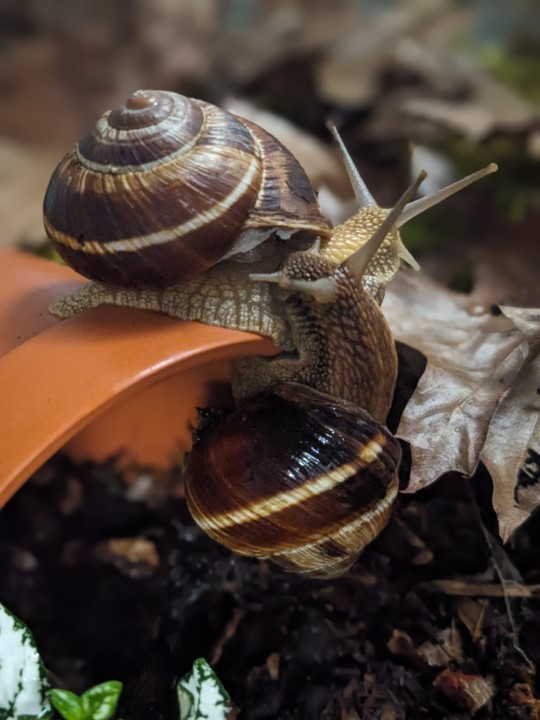
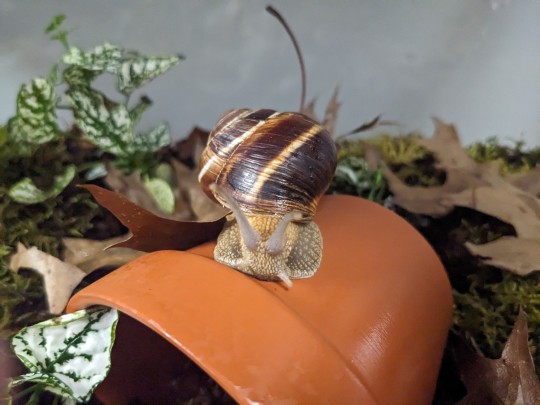
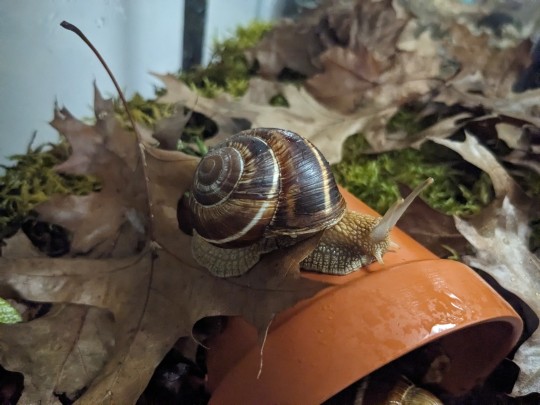
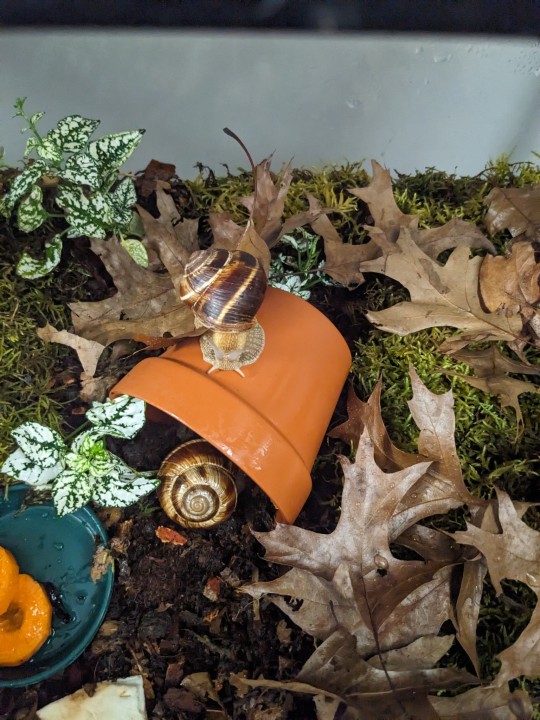
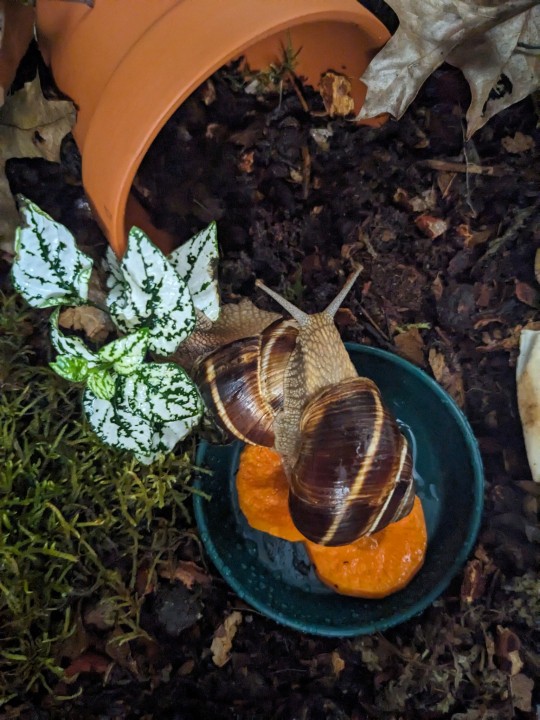
The Helix lucorum pair now have their very own setup, instead of squatting in the aspersum enclosure, and they're already more active.
The substrate in this cage is a LOT deeper, and the upper layer is composed of different stuff, to cater most toward forest substrate. The bulk of the lower level (the bottom 2-3 inches) is just coco coir, fir bark chips, soil, and sphagnum moss, while the upper layer is about half those things, and half crushed leaf litter and tree fern soil. And unlike the aspersum who only need around 3 inches, the lucorum have got around 8in:
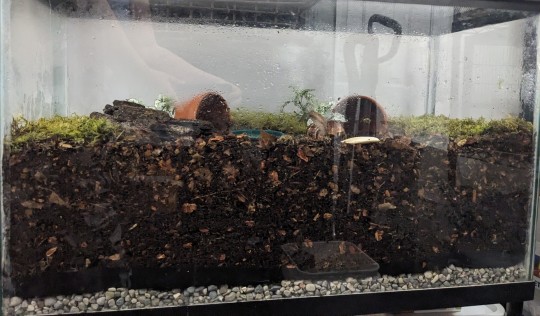
It smells a lot different, more woody, and I hope that they'll like it better than the aspersum, who don't mind coir/sphagnum/bark chips alone. My understanding is the lucorum don't really like coco coir, so I tried to limit it up top where they'll mostly be interacting.
The top is moss, leaf litter, some maple bark, hides, and feed/water dishes. There are some oreo isopods in the bark to the bottom left, and it's been seeded with springtails. I plan to add some more plants for cover, as I'm able to get them.
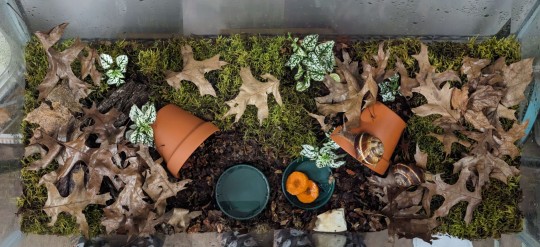
I also want to grind up some moss to make a growing solution, to paint the pots and bark. But that's got to wait for supplies, too.
42 notes
·
View notes
Text
Cheap custom backgrounds?
Hi! Want to give your enclosure something like this?
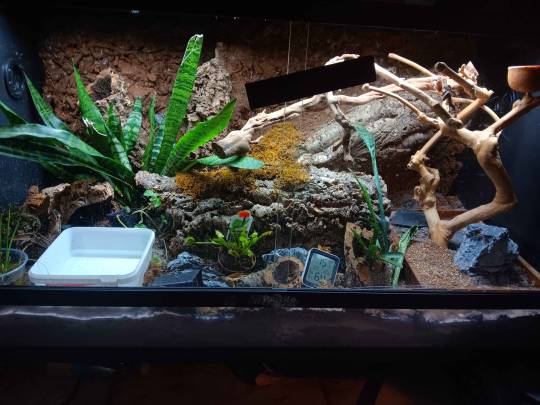
Well let me help you do this in a affordable way to give your animal some new enrichment and climbing opportunities!! Theres a misconception fancy backgrounds are hard to do or are expensive to do. This is... Very much not true! So lets do the one above together! Heres an overview of the supplies you'll need: -Your Enclosure of choice -Cocofiber and Sphagnum moss(OPTIONAL, can opt to paint) -Aquarium grade Silicone -Great stuff pond and Stone -Cork bark, roots, sticks, small rocks(OPTIONAL) First things first, you're going to want an enclosure.
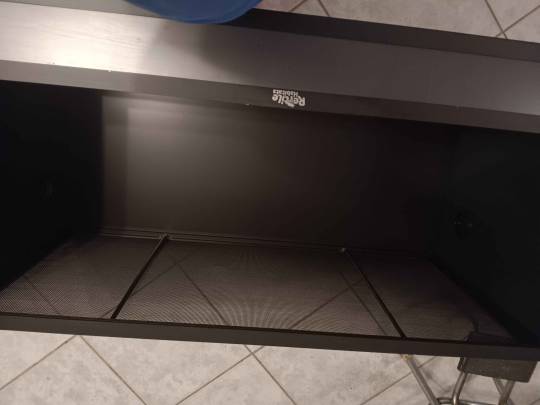
This is a DUBIA 4ftX2ftx2ft[LengthsXwidthXHeight), Also known as a 48"L x 24"W x 24"H(Inches) or a 120 Gallon Enclosure. This is considered the researched minimum size for common exotics like Ball pythons, Corn snakes, Bearded Dragons and the like to thrive. *Disclaimer: Im aware there is several groups and movements who are pushing for a 5x3x2(ft) minimum for Bearded dragons, I ultimately agree with them and the advancement of exotic keeping, but a Bearded won't suffer in a 4x2x2. Dubia Enclosures are some of the cheapest in the market, however they're decent for the price. They are stackable which makes it great for saving space, but please note they can NOT hold a lot of weight, so be mindful of that.
I own 3 of these. Two Version 1s and on Version 2, which is the one above. The V2s are generally nicer in design in my opinion, theyre functional more importantly. Once you have your enclosure of choice, lay it on its back as shown in in the first image. Next, you're going to want to prep your dry background. I use Organic Cocofiber and Sphagnum moss. I buy these extremely cheaply from Home depot or in bulk off Amazon. Make sure your material is COMPLETELY DRY! It will NOT stick if it has any moisture. Break apart your Cocofiber block and mix it with your dried Sphagnum moss in a container and have it ready on the side. I use the bulk Coco fiber, which costs about $23 for 5 bricks on Amazon. You can get them cheaper if you dont buy bulk, I do a lot of gardening and have a lot enclosures so its easier for me! https://www.amazon.com/Organic-Coco-Coir-Bricks-Compressed/dp/B01N1YP8O6?th=1 for a 4x2x2, I only use 2 bricks. Likewise, I buy Bulk moss for the same reason: https://www.amazon.com/dp/B0BK7XMNWL?ref=nb_sb_ss_w_as-reorder_k0_1_10&=&crid=1RDHFNSAUX0DF&sprefix=spaghnum%2Bm&th=1 You will only need. ONE BRICK. For the Sphagnum moss. Maybe even less than a brick. You're going to want to wet this then dry it before use. Dont be me. Dont be fooled over how small and thin those moss bricks are. I made the mistake of trying to wet an entire brick and I had to use a deep soup pot to contain it. It *explodes*. You will be buried in moss. You will scream and cry and beg for mercy as you are overwhelmed by the amount of moss Expanding from a singular brick. I am not exaggerating, I learned my lesson, please god, do not make the same mistakes I made. I still have. So, so much moss. Sometimes I still find Moss from my Mossaggeden. NOTE: Please make sure to use organic, and do not used DYED moss! Double check your ingredients, Dyed moss can be toxic to your animals! Next,
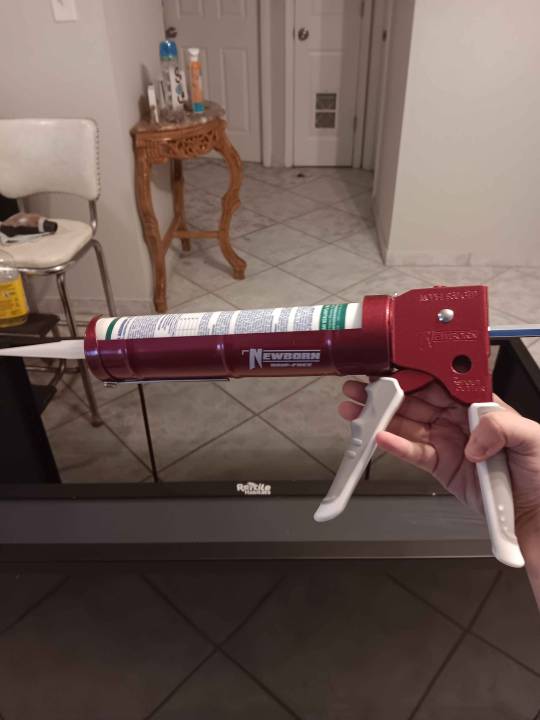
Silicone time, baby! You're going to want to use Aquarium grade Silicone from Home depot, please double check to make sure you're getting Aquarium grade! This will cost you a whopping $3 At Homedepot. The Caulking gun was an additional $12 if you dont have one already, however, it is re-usable so its a great one time purchase because I use that bad boy for a lot of my projects lmao. Once you struggle to open your stupid bottle of Silicone without exploding it like I have on several occasions; time to be silly!
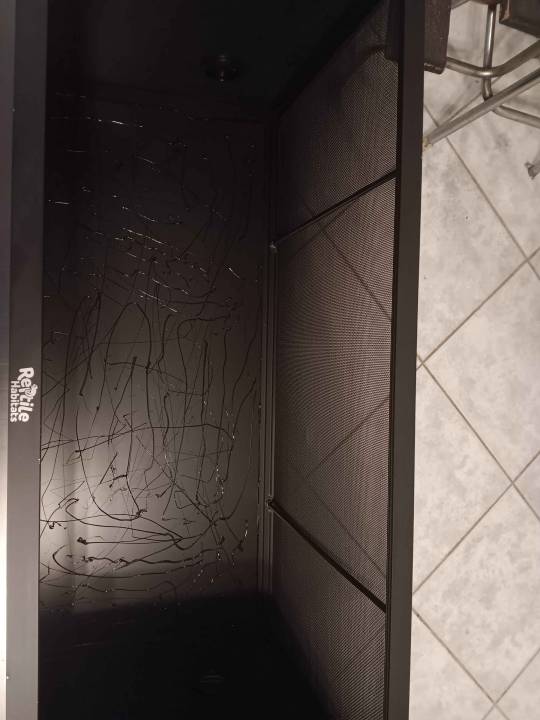
We're going to Silicone this bad boy up reaaaaal good. Dont be me, USE GLOVES! It makes your life so much better I promise. So why are we doing this exactly? Its simple, this will help your background last! It gives it texture and helps the spray foam stay in place. It also keeps your background from peeling so easily, texture matters! Your hands going to be very tired after this. Youre going to want to leave this alone for the next 24-48 hours. Minimum. You want your silicone to dry and want to make sure the smell is gone before continuing to the next step!
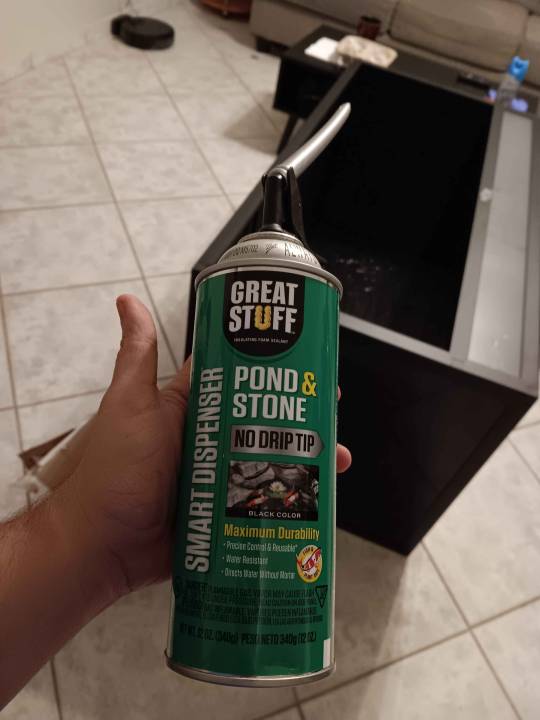
This is the funnest part. Spray foam time! For the 4x2x2, I use about 3 Bottles of this stuff. Make sure you're using NON-TOXIC Spray foam! Pond and Stone is my favorite to work with. When I add things into the background, I make sure to have a 4th can of this stuff on me. This will be the most pricey part about it. Lowes has it for $12-14 a can, but its $15 a can on Amazon. This is really the only big 'expense' when it comes to backgrounding. Smaller enclosures use less, but bigger enclosures will need more. !!!!!!!THE NEXT STEPS NEED TO BE DONE TOGETHER!!!!!!!! Youre going to want to be fast about it if youre using my method. Start spraying random patterns into the background. Youre going to want to make sure youre covering every inch of the enclosure, you can do zigzags, cut it into triangles, squares, it doesnt matter. Different shapes give you different background textures, so go nuts!!! Dont leave space between the foam, and go ham. Theres no wrong way to do this. Once thats done though, you're going to want to do the next step IMMEDIATELY:
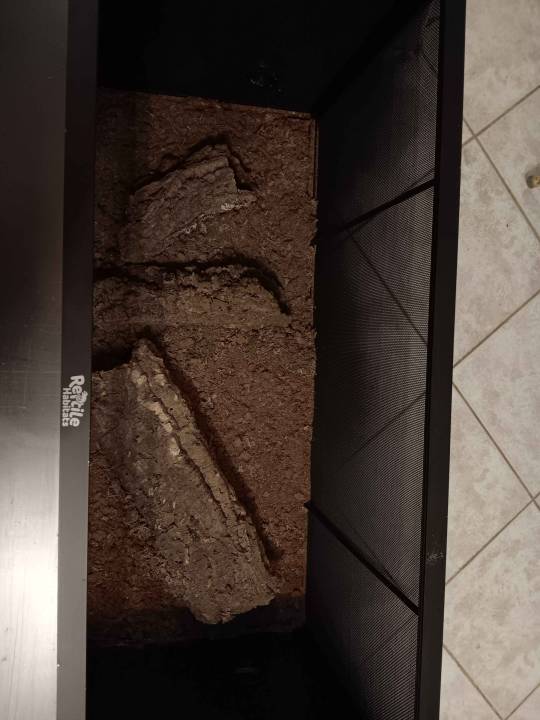
Adding your background texture and features!! This step MUST be done while the spray foam is still wet. First, take any rocks, cork, sticks, ext if youre adding them and shove them into the background. Dont have money to pay for expensive Reptile decor? You can sanitize your own rocks and sticks from outside yourself for free. I will make a guide about how I do that soon ahah. Press any features you want into the spray foam background nice and firm, then use the extra to spray around the items to secure them in place. Once you got your features in, its time to take your pre-prepped background and begin pouring it in! Spread it evenly across the enclosure. Do NOT worry if you have excess, poor it in anyway. Once you've poured the background in. GENTLY pat it over the sprayfoam. Next, you'll want to leave this to dry for the next 24 hours minimum. Leave it laying on its back so nothing drips or sags where you dont want it to!!! After 24hours, lift the enclosure and gently tap the back of it to knock off your excess background to reveal your background!

Annnnnnd you're done!!! Now you're free to add your lighting, real or fake plants, heating, substrate and other decor as you please! This can add so much more enrichment to your animal and give them so much more room to utalize their space. My individual personally loves his background and utilizes it all of the time! Contrary to belief, a lot of snakes aren't 'pet rocks' if you give them stuff to explore and climb. My guys out pretty often! Of course it comes down to personality too ahah.


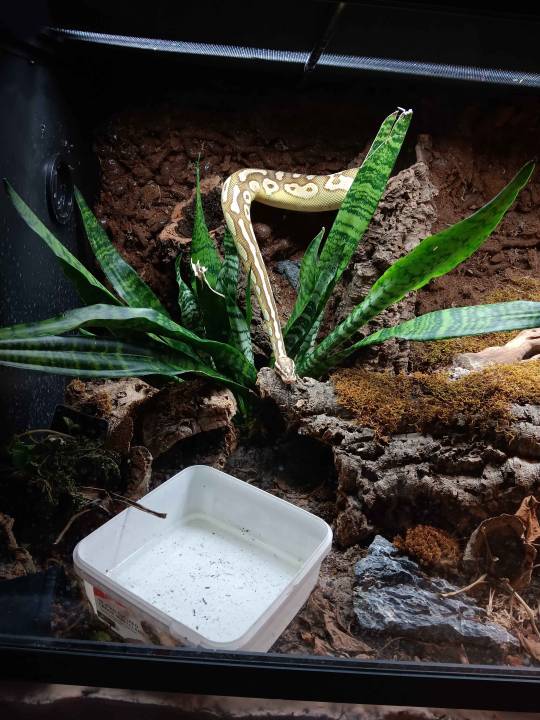
Heres some pics of him using his climbing features! He prefers the middle climbing feature here and the one off to the right, where he uses to bask when he doesnt want to be seen and hangs out the top of it, or his bird perch when he doesn't mind being right there out in the open. c:
#reptiles#snake#herpetology#ball python#background#How to craft#Custom enclosure#Mossaggeden still haunts me#And my hands have known no peace since I started doing these#I hate silicone#More so I hate caulking#bioactive#tutorial#I picked up that little bird stand for like $15 at a local owned exotics store and thats been his favorite thing ever#Sanitized it real good and I have hundreds of pictures of him on that thing#I have a big one for my tree boa its like 5 ft tall#I cant wait to use that when shes ready for her adult enclosure#Did you know you can get a 10x10 growtent for like $300?#Thats a steal actually#Modify it real good and boom#perfect enclosure for like a 8ft tree boa#Im going to try growing a tree in it#Godspeed#dont let this flop#My hands will never recover from the amount of caulking ive done in my life
14 notes
·
View notes
Text
Cloning cannabis is a horticultural technique used to create genetically identical copies (clones) of a cannabis plant. This process allows growers to replicate a desirable parent plant without the need for seeds, ensuring that the new plants will have the same genetic characteristics as the original.
Here are the basic steps involved in cloning cannabis:
Select a Healthy Mother Plant: Start by choosing a healthy, robust cannabis plant with the desired characteristics you want to replicate. This plant is referred to as the "mother plant."
Gather Supplies: You'll need a few supplies, including a clean and sharp razor or scalpel, rooting hormone, small pots or rooting cubes, a cloning gel or solution, and a propagation tray or a humidity dome.
Prepare the Mother Plant: Take a cutting (clone) from the mother plant. This is typically done by cutting a branch or stem tip that has healthy growth and at least a few sets of leaves. Make the cut just below a leaf node. Remove any large fan leaves, leaving only a few smaller leaves at the top.
Treat the Clone: Dip the cut end of the clone in rooting hormone to encourage root development. This helps the clone establish itself when planted.
Plant the Clone: Place the treated clone in a small pot or rooting cube filled with a growing medium, such as soil, coco coir, or a specialized cloning mix. Make a small hole in the medium with a pencil or similar tool, insert the clone, and gently pack the medium around it.
Create a Suitable Environment: To ensure successful root development, maintain a high humidity environment. You can achieve this by placing the clones in a propagation tray with a humidity dome or using a plastic bag to cover them. Keep the clones under fluorescent or LED lights for optimal growth conditions.
Monitor and Maintain: Check the clones regularly to ensure they stay adequately hydrated and maintain the right temperature and humidity levels. Mist the clones with water to keep the humidity high, and make sure they receive gentle light to stimulate growth.
Transplanting: Once the clones have developed roots (usually in 2-4 weeks), they can be transplanted into larger pots or into the garden if you prefer outdoor cultivation.
Cloning is a popular technique among cannabis growers because it allows them to maintain genetic consistency and ensure that they are growing plants with known characteristics. It can also save time compared to growing from seeds, as clones skip the germination phase and start with a head start in growth.
#kush strains#growing marijuana#growing weed#420culture#420buds#cloning cannabis#weed love#weed life#smokeweed
21 notes
·
View notes
Text
i have compiled some native plant gardening tips for those of whom are new to it based on my own experiences and trials and errors, so here goes:
if you're germinating seeds, dont use coco coir. it sucks. ignore anyone who tells you to use it. it doesnt hold moisture well at all and doesnt decompose well. look for a "seed starter" soil instead, it will have a bunch of beneficial nutrients n such to get the seeds and their roots going. if you're concerned about peat, there are plenty out there that don't have any, coast of maine comes to mind. I used to think I needed to grow them in a sterile env, mostly to prevent mold, but I find that nearly impossible to avoid, so on to my next tip:
you're better off trying to start your native seeds outside. even if you wanna use cell trays, thats fine (bring them in when it freezes though), but preventing mold when germinating inside, especially in your fridge with all your food you sometimes forget is there and gets moldy, i've found to be nearly impossible. granted, mold isnt always a bad thing, it can help eat the seed coating so the roots can grow, but this obviously isnt true for all seeds and especially not small seeds. outside is your best bet, I just find less mold grows out there. might be good to make a mini green house of sorts to keep your seed trays in, obviously thats unnecessary if you're growing them in the ground.
if you're like me and have no real ground space and only have a patio or balcony and have to grow everything in pots, I have a couple tips for you actually, but for now lets focus on winter protecting your plants. most suggest burying them under ground... im assuming like me that isn't really an option for you, so we're gonna come up with another solution. you're probably going to need to invest a good amount of money into this, depending on if you have the material around or not. but to start off:
huddle all your pots together. they can help insulate eachother better and keep eachother warm. i try to put the least cold hardy ones in the center, if you can, put them all together in a larger container like a bucket or something and cover it with lots of mulch. water sparingly and lightly, enough to wet the soil but not enough to drip through the bottom of the pot. you should be sparingly watering anyways in winter, but especially so here since they'll probably be in a container that doesnt drain unless you want to drill in holes on the bottom. try to make sure the pots dont touch the sides of the containers if they're plastic and fill in the gaps with mulch or something, plastic isnt the best material to use for pots regardless, unfortunately its the cheapest and most readily available and comes in varying sizes so I cant get mad at you for using it.
heavily mulch your plants. maybe put some straw on top of the mulch too if you have any. I used to think leaves were enough but there's too much airy space between them, you want to make the insulation as compact as possible. if you're wanting to make a place for bumblebees to hibernate i'd suggest making an entirely different leaf pile or something unrelated to your plants. (obv doesnt apply to ppl growing stuff in the ground bc you have the privilege of being able to sprinkle leaves wherever you want. bastard.)
invest in some burlap fabric and some cheap towels or blankets for even more insulation, the fuzzier the blanket the better imo, but it should be fine whatever you choose, just try not to get too thin of a fabric. the burlap and blanket/towel might not be necessary to use every day but definitely on days where its below freezing. these also will last you every year, assuming you take care of them right. cover the tops of pots but also wrap around the sides of them and maybe put a layer or two of burlap down on the ground under them, esp if they're on cold hard concrete.
if you have any plants with tuberous roots, they are more vulnerable to freezing if they're in a pot and will need extra protection or to be brought inside during a freeze, to not shock it with a temperature shift try putting the pot in the fridge if you can, otherwise again it might be good to try to make a mini green house of sorts, maybe turn one of those plastic window well covers into one? or put it in a garage if you have something like that. they also, maybe obviously but just in case, dont need to be watered as often since they have lots of water stored in themselves.
putting your pots really close to the walls of your house can also help keep them warm. not sure if its enough to prevent them from freezing but combined with everything else? well, it's survived many of my plants over the last couple years (though i didnt know about the tuber thing until recently and it explains so much why certain plants didnt make it >_>)
ok moving on from winter. lets go back to talking about pots, bc seriously if you can get your hands on ANYTHING besides a plastic pot, jump on it. they suck universally. they suck in winter and in summer. their only benefit is providing some humidity but that's not really something I personally need as someone in a temperate climate. also, the lighter the pot the better. dark plastic pots can cook the roots of your plants in the sun in summer so you have to be extra careful. also, the deeper the pot the better for native plants.
because you're growing native plants in pots, they're going to need a lot more extra care. native plants in the ground can pretty much be neglected since nature takes care of it all, but you have to provide the water, soil, fertilizer, etc. so lets talk about that:
you dont need to water every day necessarily, the old trick of watering when the top 1-2 inches is dry is your best method to go by. if you live in the midwest or northeast or anywhere it gets heavy rain, it would be good to give them a deep watering every now and then, I try to follow what the rain does and water at the same frequency as it. it would be good to water daily (maybe only a small amount if the soil is still somehow wet) on really hot days even though you dont have to water every day, like on days above 90 degrees. also the best time to water, especially in summer, is early in the morning, ideally some time before 8, 9 is ok but 8 is better imo bc it gives the roots more time to absorb the water before the sun evaporates it, and around 10 is when that starts happening. if you have to water at night, water early at night and try to avoid watering the leaves if you can as water left over on them overnight can cause mold, mildew or other diseases. if you have to water mid day, at least wait until the sun isnt directly on the plants so they can actually absorb some of the water.
since you have to provide your own water and cant rely on rain, you also have to provide your own fertilizer. I mean you already did before, but I mean liquid fertilizer. rain transfers all kinds of vitamins and minerals to the plants that receive it, but you're likely not getting nearly as much in your tap, and since your pots likely aren't being shat in by various woodland creatures, they're getting even less fertilizer. so you have to provide the fertilizers, both slow and liquid. I thought I could just get by with slow release but the plants seem to do better with liquid too, especially when in bloom. if you use slow release you dont need to use the liquid fertilizer as often, and you also likely dont have to use the liquid as frequently as it says on the bottle, since native plants generally require less nutrients to begin with, but of course this is something you'll probably have to test on your own to see how much your plants want and tolerate. I have a whole feeding schedule I can share if you want. some brands I've been using for liquid fertilizer are foxfarm (they have good soil too), microlife, and maxsea (technically a powder but you mix it with water) and for slow release is foxfarm again, jobe's organics, and lilly miller's. I'm trying to use as organic of materials as I can since I'm growing the plants for native wildlife and pollinators and I dont want to negatively effect them as much as possible. if anyone wants to know what products I use specifically hmu or leave a reply.
I trust you're able to figure out your soil situation on your own, but here's some tips just in case: try to avoid brands like miracle grow since I'm pretty sure it has inorganic materials in it, generally I'd aim for the most organic thing you can find, assuming you're growing native plants for the same reason I am, for nature. also, take those messages about well-draining soil seriously, you can use perlite but also some soils are just lighter than others, I find foxfarms is pretty light and drains well.
during winter, leave the plants as they are, dont cut them down. lots of bugs and animals have made nests or homes or have cocoons n such in there. you can cut it down in the spring when frost is nor longer a concern, but dont throw it in the trash either bc the bugs might still be sleeping in them but will be less vulnerable now that winter is gone.
ok that's all I can think of for now, I'll add on to this if I think of anything else, but hopefully this is helpful for someone out there :]
#gardening#native plant gardening#gardening tips#germinating#stratification#pollinator garden#patio garden#balcony garden
2 notes
·
View notes
Text
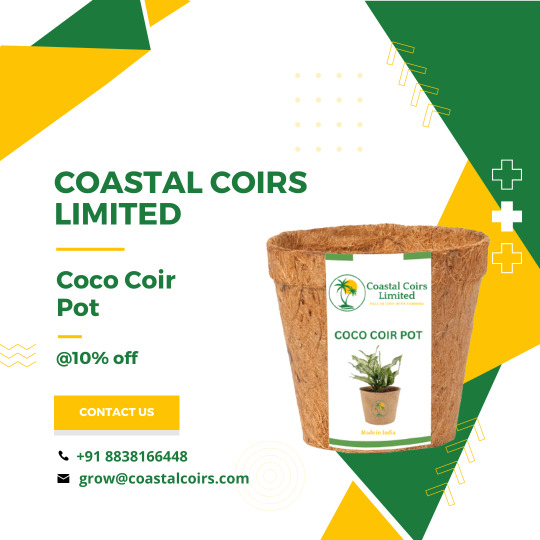
"Introducing Coastal Coirs Limited's premium Coco Coir Pot - the sustainable choice for your plants." ~ "Made from 100% natural coconut fiber, our eco-friendly pots provide excellent air circulation and drainage for healthy root growth." ~ "Say goodbye to plastic and hello to biodegradable pots that can be easily transplanted into the ground." ~ "Choose Coastal Coirs Limited's Coco Coir Pot for a greener future." ~ Contact us for more details, WhatsApp : +91 8838166448 (or) https://wa.me/918838166448 Website : www.coastalcoirs.com Mail : [email protected] . . . . . . . . . . . . . . . . . . . . . . . . . . . . . . . . . . . . . . . . . . . . . . . . . . . . . . . . . . . . . . . . . . . . . . . . . . . . . . . . . . . . . . . . . . . . . . . . . . . . . . . . . . . . . . . . . . . . . . . . #coastalcoirs #coastalcoirslimited #cococoirpot #cococoirpith #cococoir #cocopeat #coirpith #cocopeatblock #cocopeatforsale #manufacturing #pottingsoil #gardenfertilizer #cococoirgrowbag #sustainablegardening #ecofriendly #biodegradable #naturalfibers #plasticfree #healthyroots #transplantable #greenliving #gardeningsolutions #hydroponics #horticulture
#coco coir#coco peat#coir pith#horticulture#hydroponics#coco coir pith#growing medium#greenhouse#gardening#coastal coirs limited#coco pot#coir pot#coco coir pot#soilless growing medium
0 notes
Text
How to Use Coconut Coir Pith in your Garden?
Using coconut coir pith, also known as coco peat or coir dust, in your garden offers several benefits, including water retention, aeration, and soil conditioning. Here's a step-by-step guide on how to use coconut coir pith effectively in your garden:
Procure Coconut Coir Pith:
Purchase coconut coir pith from gardening stores, nurseries, or online suppliers. It is commonly available in compressed bricks or blocks.
Rehydrate the Coir Pith:
Place the compressed coir pith bricks in a large container or tub.
Add water to the container, allowing the coir pith to absorb moisture and expand.
Allow the coir pith to soak in water for several hours or overnight until fully rehydrated.
Mix with Soil or Potting Mix:
Once fully rehydrated, fluff up the coir pith with your hands to loosen it.
Mix the rehydrated coir pith with your garden soil or potting mix in a ratio of 1:1 or as desired. Alternatively, you can use coir pith as a soilless growing medium.

Use as Soil Amendment:
Incorporate the rehydrated coir pith into your garden soil as a soil amendment to improve its structure, moisture retention, and aeration.
Dig the coir pith into the soil to a depth of a few inches, ensuring even distribution throughout the garden bed.
Mulching:
Spread a layer of rehydrated coir pith on the soil surface around plants as mulch.
Mulching with coir pith helps conserve soil moisture, suppresses weed growth, and regulates soil temperature.
Seed Starting and Container Gardening:
Use rehydrated coir pith as a growing medium for starting seeds indoors or in seed trays.
Fill seed trays or pots with a mixture of coir pith and perlite or vermiculite for optimal seed germination and seedling growth.
Hydroponic and Aquaponic Systems:
Rehydrated coir pith can also be used as a growing medium in hydroponic and aquaponic systems.
Place the coir pith in growing containers or hydroponic trays and use it to grow plants without soil.
youtube
Watering and Maintenance:
Water your garden regularly to ensure adequate moisture levels, especially when using coir pith as a soil amendment or mulch.
Monitor the moisture levels in the soil and adjust watering as needed to prevent waterlogging or dryness.
Sustainable Disposal:
Coconut coir pith is a sustainable and biodegradable material. After use, it can be composted along with other organic waste to enrich the soil.
By following these steps, you can effectively use coconut coir pith in your garden to improve soil structure, retain moisture, and promote healthy plant growth.
#Coir Dust#coco coir pots#coco soil#coco peat#coir pots for plants#coco pith near me#coco pith#coco pot#coconut fiber for plants#coconut husk pith#coir fibre pith#Peat Grow Bags#Coir Pots For Plants#Coco Pot#Youtube
1 note
·
View note
Text
3/9/24
Big spring sale at the nursery today, so we bought tomato and pepper starts. I potted them up and left them on the east wall by the potatoes:

The Chile de árbol had 2 plants in 1 pot, so I delicately split them. Hopefully they both survive.
I sowed French marigold, alyssum, and emerald tower basil, also on the east wall. Ideally, I’ll remember to check on the east wall while tending to the other beds:

And I looked at previous entries, and yes my poppies are coming in a bit later and more sparingly than last year. The whole yard was in full bloom by 4/1/23; this year, the flowers haven’t even started to develop yet. Could it be the new wildflower seeds I sowed a few months back? Less rainfall than last year? Weeds or depleted soil? I’ll keep an eye on them this season.
I finally started organizing the sheds. There’s a lot left to do so I’ll show it off when it’s done. I need to get: landfill compost, coco coir, sand, stakes for another arch trellis, possibly a small wheelbarrow.
2 notes
·
View notes
Text
How to Grow Cannabis
Growing cannabis can be an exciting and rewarding experience, but it requires careful planning and attention to detail. In this guide, we will explore the best practices for growing cannabis, including popular keywords to help make this article SEO-friendly.
Choose the Right Strain
The first step in growing cannabis is choosing the right strain. Popular keywords for strains include sativa, indica, and hybrid. Sativa strains tend to be uplifting and energetic, while indica strains are more relaxing and sedative. Hybrid strains are a combination of both and offer a balance of effects. It's important to research different strains and choose one that suits your needs and growing conditions.
Provide Adequate Lighting
Lighting is crucial for cannabis growth and development. Popular keywords for lighting include LED, HPS, and CFL. LED lights are energy-efficient and long-lasting, while HPS lights provide intense light and are popular for flowering stages. CFL lights are a cost-effective option for smaller grows. It's important to choose the right type of lighting for your grow space and to provide adequate light intensity for optimal growth.
Maintain Proper Temperature and Humidity
Cannabis plants thrive in specific temperature and humidity ranges. Popular keywords for temperature control include thermostat, thermometer, and hygrometer. It's important to monitor the temperature and humidity levels regularly and make adjustments as necessary. A thermostat can help control the temperature, while a hygrometer can measure humidity levels. Keeping the environment consistent is crucial for healthy growth.
Use Quality Soil and Nutrients
Quality soil and nutrients are essential for healthy cannabis growth. Popular keywords for soil include potting mix, compost, and coco coir. It's important to choose soil with the right nutrient balance and pH level. Nutrients like nitrogen, phosphorus, and potassium are necessary for healthy growth. It's important to research and choose the right nutrients for your specific strain and growing conditions.
For More Info Click Here
9 notes
·
View notes
Text
@dnpanimationstudioclone @transmascnaotoshirogane @astral-catastrophe @qsmp-tubbo @stealingyourbones
[Video Description: A video of someone making a small enclosure for a tiny toadlet. Subtitles are in quotations.
"Building a first home for the first todlet that emerged!" The person pour a bucket of water in a container with a brick of coco coir, or coconut fibers.
"Soaking coco coirin rainwater" They begin to break apart the brick with their hand and spread it out in the container.
Jumpcut to the brick completely apart. They grab a clump of fibers and put it into a container. "Into an old yoghurt pot" They push the fibers to the bottom of the pot.
Jumpcut. "Damp moss to retain moisture" They put some green moss into the pot and have it cover 1/2 of the available area.
Jumpcut. "Tiny water bowl." They dip a water bowl about the size of a finger segment into a larger container of water to fill it up and place it into the yoghurt pot, followed by another jumpcut.
"And here it is, what a cutie." They coax THE TINIEST LITTLE TOAD onto the tip of their finger. This toad is smaller than the surface of their finger tip. They let the camera get a good look at this itty-bitty toadlet.
"Here's your new home!" They lower their finger into the pot and the toad makes little grabby hands at the moss before grabbing onto it and leaving the finger. The camera zooms into on the baby toad as they explore the moss.
"Blackfly for dinner" They cut to their backyard or some fenced in area and use shears to cut off the stem of a plant, presumably called a blackfly.
They cut back to the yoghurt pot and put the stem inside. "Grow little one!" They zoom in on the toadlet hiding in the moss.
End Video Description]
Building a home for a toadlet
(via)
164K notes
·
View notes
Text
The Ultimate Guide to Germinating Weed Seeds for Maximum Yield

Germinating cannabis seeds is the first and most crucial step to growing a healthy plant that yields bountiful buds. Whether you're a beginner or an experienced grower, getting the germination process right can set you up for success. In this guide, we’ll walk you through the essential steps to germinate weed seeds and maximize your yield.
1. Choose the Right Cannabis Seeds
The first step to a successful germination process is selecting high-quality seeds. Purchase seeds from a reputable seed bank like Hypno Seeds, which offers stable genetics and a wide range of strains, including feminized, autoflowering, and regular seeds.
Make sure to pick seeds that are healthy, firm, and dark brown in color. Avoid seeds that are light, cracked, or damaged, as they may have poor germination rates.
2. Prepare Your Germination Environment
Cannabis seeds need a warm, dark, and humid environment to sprout. Ideal temperatures for germination range from 70°F to 85°F (21°C to 29°C). You’ll also need to maintain high humidity levels, around 70%, to keep the seeds moist without drowning them.
If you’re using a seed tray or germination dome, this will help maintain the ideal environment by trapping moisture.
3. Choose Your Germination Method
There are several methods to germinate weed seeds, but the most popular ones are:
Paper Towel Method
Moisten two paper towels and place one on a plate.
Place your seeds on the towel about an inch apart.
Cover with the second paper towel and ensure the towel is damp but not soaking wet.
Place the plate in a warm, dark area and check daily for moisture.
Once the seeds sprout (in 2-7 days), carefully transplant them into your growing medium.
Direct Planting in Soil
Fill a small pot with pre-moistened, light, and airy soil.
Make a small hole (about 0.5 to 1 inch deep).
Place your seed in the hole and gently cover it with soil.
Water lightly and keep the pot in a warm, dark location.
Wait for the seedling to emerge, usually within a few days.
Water Glass Method
Fill a glass with water at room temperature.
Drop your seeds into the water and let them soak for 12-24 hours.
Once the seed sinks, carefully remove it and plant it in your growing medium.
Ensure the seed has proper moisture and warmth to start sprouting.
4. Keep Your Seeds Moist, Not Drenched
Moisture is essential for germination, but too much water can suffocate the seed. Keep the environment damp but not overly wet. Check the paper towels or soil to ensure they remain moist but not soggy. Over-watering will drown the seed, leading to failed germination.
5. Provide Proper Lighting After Germination
Once the seeds have sprouted, they will need light to grow strong. For seedlings, it's best to provide gentle lighting to avoid stressing them. Use low-intensity grow lights or place them in a sunny window. Keep the lights on for around 16-18 hours a day, simulating daylight hours.
6. Transplant Your Seedlings
Once your seedlings have sprouted and grown a few small leaves, they’re ready to be transplanted into their final growing medium, whether that’s soil, coco coir, or hydroponics.
Ensure the growing medium is rich in nutrients but not too rich, as seedlings are delicate.
Transplant carefully to avoid damaging the delicate root system.
7. Maintain Optimal Conditions for Growth
After transplanting, your seedlings will need consistent care. Keep the following conditions in check:
Temperature: Ideal temperatures for cannabis growth range from 70°F to 85°F (21°C to 29°C).
Humidity: Maintain a humidity level of 60%-70% for the first few weeks of growth.
Watering: Keep the soil or growing medium damp but not soaked.
8. Maximize Yield with Proper Care
To maximize your cannabis yield, make sure to:
Provide proper nutrients: During the vegetative stage, use balanced fertilizers high in nitrogen. Switch to bloom-specific nutrients with more phosphorus and potassium during the flowering stage.
Ensure sufficient light: Invest in a good quality grow light if you’re growing indoors.
Train your plants: Techniques like low-stress training (LST), topping, and screen of green (SCROG) can increase yield by encouraging more even growth and more bud sites.
Maintain airflow: Proper ventilation and air circulation are critical to prevent mold and ensure healthy growth.
9. Common Germination Issues and Troubleshooting
Here are a few common issues that can arise during germination and how to fix them:
No germination: Make sure your seeds are fresh and that they’re kept at the right temperature. If your seeds don’t sprout, try a different germination method.
Seedlings stretching: If your seedlings are tall and thin, it means they’re not getting enough light. Move them closer to your light source.
Mold or rot: If your seeds are exposed to too much moisture, they may develop mold. Ensure proper ventilation and avoid over-watering.
10. When to Start Growing Indoors vs. Outdoors
Germination can take place either indoors or outdoors depending on your growing preference. If you live in a region with cold winters, starting your germination indoors under a grow light will give your plants a head start. Once they’re strong enough, they can be moved outside when the weather warms up.
Conclusion
Germinating cannabis seeds successfully is the foundation of a productive grow. With the right techniques, attention to detail, and environment, you can maximize your yield from seed to harvest. Start by choosing high-quality seeds from reputable sources like Hypno Seeds, and follow the steps outlined here for the best results.
0 notes
Text
Oh those are really healthy roots! I wager your orchid has a pretty good chance at not dying as long as you give it enough air and sunlight (they need more than you think!). Purple roots are normal; it's just part of natural colour variation. I think the colour pigments might be triggered by sunlight but do not quote me on this. The most important thing about roots is to trim away the ones that are actively rotting, and you've already done 👍 congratulations. just keep a close eye on them, if any of them start rotting again that means you didn't trim enough of the rot away. I mention this because most people don't trim enough the first time; your orchid can probably live on 1/6 of its current root mass and still be fine. Plants are very resilient!
As for the jar idea, first of all ask @viridianriver about their orchid torture orb, second, I've never tried growing orchids in jars and I'm a bit wary about growing them in water because water doesn't really have nutrients, and if you want a hydroponic setup you're going to have to figure out how to introduce nutrients into the system eventually and it's a whole thing. They can probably survive and even thrive in a pure water setup in the short term, but in the long term I don't think it'll really work? Their endosymbiotic fungi that they get nutrients through live off of digesting dead wood. Maybe if you put some wood chips on water? But at that point you might as well just put them in a wood bark setup. Anyway. If you do want to try a water setup, I wouldn't worry too much about the roots overcrowding the jar. Orchid roots aren't like normal plant roots, they don't crowd themselves if they can help it. Once it gets too crowded below them they'll start growing aerial roots that point up, and also if it's a mason jar, the jar will be clear so you can just check the roots through the glass. They won't cram themselves in there or anything, once it comes time to repot it'll probably be very easy to remove it.
If you can't get orchid bark right away, spray the roots with some water at least once a day and maybe cover them with damp cardboard, depending on how dry the air is where you live! Orchids can live in open air setups but for beginners it's better to put them in bark because the bark helps them moderate humidity levels. And when you get a pot for it, get a bigger pot than you would for another plant of its size; most of our indoor plants like to have their roots squished but orchids like to sprawl like indolent kings. If you forget to water your plants a lot (hi) you can throw some coco coir in with the bark but do not use spaghum. Actually you can probably use spaghum with how humid orchids like it but if it dries it'll just suffocate the roots again and it's a bitch to rewet. Also throw out the moss that came with your orchid! You can't reuse it on other plants or mix it back in with its new potting medium because the bacteria that caused the roots to rot will still be in there.
I started with succulents like everyone else but tbh orchids are rapidly becoming my plant blorbos. Everyone takes care of them wrong and it's not your FAULT because the care instructions that come with them are!! Incorrect!!! If you do what they say then your orchid will die!!!! If you give them the right environment they're SO easy. They're such easy plants to grow. They have been UNFAIRLY SLANDERED by a MISINFORMATION campaign. They don't deserve this.
#the orchid post#congrats on your new child#also sorry if this is incoherent. it's 2am#i stayed up too late
38K notes
·
View notes